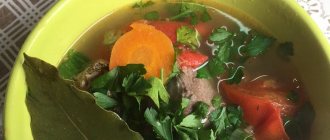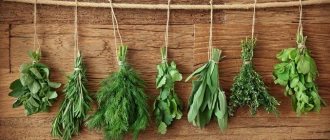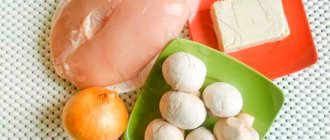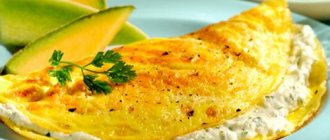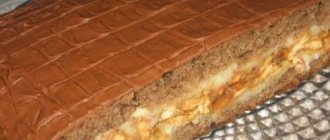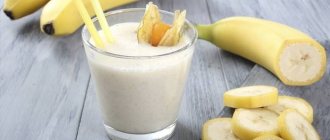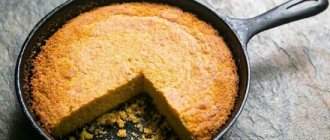Raw
Small bulgur can be used without heat treatment.
They replace breadcrumbs, and the cutlets or chops turn out more ruddy and crispy. After pre-soaking for several hours in warm or cold water, bulgur is included in salads and meat dishes. This “raw porridge” has a dense structure, it turns out crumbly, quite hard, but not hard. The calorie content of 100 g of swollen cereal is much less than dry cereal, only 96 kcal. The national Turkish dish is kibbeh (chi kufte) - small three-layer steaks. Their top and bottom layers consist of meat paste, and the middle layer is made of soaked bulgur. These “cakes” are supposed to be eaten raw, but many people prefer to bake them on a baking sheet over an open fire.
https://www.youtube.com/watch?v=upload
In many countries, a salad with bulgur or couscous - Tabbouleh - is very popular. Tabbouleh includes fresh tomatoes, parsley and mint, season the salad with lemon juice and olive oil. This is a favorite dish of many people who monitor their physical fitness. Among them are actress Sharon Stone and French football player Zinedine Zidane.
Rating of the best healthy nutrition delivery services The best healthy food delivery services to your home based on real customer reviews and ratings. Ready-made food for weight loss, maintaining current weight and gaining weight.
Contraindications to the use of bulgur
- As mentioned above, healthy people can eat bulgur without fear of harming the body. But those who have gastrointestinal diseases need to be extremely careful.
- There is one more serious contraindication, which applies to those people whose body is not able to digest gluten. Bulgur contains a lot of this substance, and for those who suffer from celiac disease (the inability of the digestive system to absorb the protein of certain grains), this cereal can be deadly. The whole danger of the situation is that some people do not even suspect that they have this disease. But if, after eating bulgur, weakness, drowsiness, flatulence, or diarrhea appear, this is a reason to consult a doctor and check the fact of normal absorption of gluten.
- Some people may be allergic to cereals; bulgur is also not suitable for them.
Fried
Special types of pilaf are prepared from fried bulgur and used as a component of salads and vegetable stews. It is used to make kube pies, which are usually cooked on the grill. The filling for such pies is a mixture of bulgur with meat, and the shell is fine grain.
The national Arab dish, bulgurlu kebab, is also prepared from fried finely ground grains and minced meat. Roasted bulgur mixed with honey and cinnamon is used as a filling for strudel or baked into sweet flatbreads. The calorie content of 100 g of cereal that has undergone such heat treatment is 110 kcal.
Boiled
Like any cereal, bulgur is used boiled. The calorie content of bulgur cooked in water is 83 kcal/100 g. There are several cooking methods.
- In a saucepan. Pour water over the cereal in a ratio of 1:2, bring to a boil, remove from heat and leave for an hour and a half, covering the pan to retain heat. To give the dish a spicy, nutty taste, you can fry the cereal in oil for 3-5 minutes before cooking.
- In a slow cooker. Load the cereal and water into the multicooker bowl in a ratio of 1:2, turn the device on to the “quenching” mode. Cooking time: 20 minutes. 5 minutes before the end of cooking, add butter and salt.
- In a frying pan. Pour water into a deep frying pan, add bulgur, salt, and spices. The water level above the grain should be twice as high as the grain layer. Place the pan on low heat and simmer until the water has completely boiled away. Oil is added to the finished porridge.
- In the oven. The porridge cooked in the oven turns out to be very tender. Pour bulgur into a pot, fill it with water (ratio 1:2) and place it in an oven preheated to 300°C. The porridge will be ready in about 20-30 minutes.
Dishes
Bulgur is used as a side dish for meat and fish, cabbage rolls are made from it, and stuffed with peppers, tomatoes, and eggplants. In the East they replace rice in pilaf. Soups are cooked with this grain, and desserts are also made, served with milk, honey, and nuts.
Milk porridge
Calorie content of 100 g of ready-made dish is 118 kcal.
Melt the butter in a thick-walled saucepan and fry the coarse-grained bulgur in it. The cereal will acquire a beautiful golden color and a pronounced nutty aroma. Without removing the pan from the heat, pour in the milk in a thin stream, stirring. Add sugar, cook over low heat for about 20 minutes. Serve porridge with berries, fruits or nuts.
Soup with smoked ribs
Calorie content of 100 g of soup with smoked ribs is 310 kcal.
Ingredients:
- pork or lamb ribs;
- whole bulgur;
- potato;
- carrot;
- onion;
- tomato paste;
- vegetable oil.
Fry the cereal in a frying pan, then add grated carrots, onion rings, and brown. Place the roast, smoked ribs and coarsely chopped potatoes in a saucepan. Pour in water, cook over low heat, stirring occasionally, until the potatoes are cooked. At the end of cooking, add salt and spices. Serve with croutons.
Calorie content of 100 g of ready-made dish is 98 kcal.
Ingredients:
- coarse-grained bulgur;
- Bell pepper;
- onion;
- tomatoes;
- vegetable oil.
Pour water over the cereal for 15 minutes. Grate the tomatoes, cut the peppers into cubes. Finely chop the onion and fry until golden brown. Then add the peppers to the pan and brown them over high heat. Place all ingredients in a saucepan, add the required amount of water, and simmer over low heat. After 10 minutes, add grated tomatoes and spices, cook for another 10-15 minutes. Remove the pilaf from the heat and let the dish sit for about half an hour.
Kubbe cutlets
Calorie content of cutlets - 267 kcal/100 g.
Ingredients:
- Midyat bulgur;
- chopped meat;
- onion;
- ground nuts;
- citrus zest;
- spices (black pepper, paprika, coriander).
Pour warm water over the cereal and leave for half an hour to swell. Then drain the water and mix the bulgur with 2/3 of the minced meat. Make the filling from sauteed onions, 1/3 of the minced meat, spices and chopped nuts. Form small oval kubbe cutlets from the main part of the minced meat, placing the filling in each portion. Fry the cutlets in a large amount of oil. Serve with vegetable side dish.
https://www.youtube.com/watch?v=ytaboutru
Kysyr salad
Calorie content of kysir salad is 149 kcal/100 g.
Ingredients:
- Midyat bulgur;
- bell pepper;
- tomatoes;
- arugula;
- green and onions;
- parsley;
- mint;
- lemon juice;
- fruit syrup.
Steam the cereal with boiling water. Mix sauteed onions, vegetables cut into small pieces, chopped herbs and cereal strained from water. Season with olive oil, lemon juice, fruit syrup, lightly salt, mix gently. Let the salad sit for 10-20 minutes.
Salad with Parmesan and Green Beans
Calorie content of 100 g of ready-made dish is 96 kcal.
Ingredients:
- small or Midyat bulgur;
- Parmigiano-Reggiano cheese;
- green beans;
- lemon juice;
- crushed garlic;
- ground pepper.
Steam the cereal with boiling water, cut off the ends of the beans, blanch them in salted water, and fry in olive oil. Cut the cheese into small pieces. Mix everything, salt, add lemon juice, pepper, let it brew for about half an hour.
Bulgur bread
The calorie content of this bread is 194 kcal/100 g.
Ingredients:
- small bulgur;
- whole grain flour;
- dry yeast;
- sugar;
- milk.
Make a dough using a small amount of flour, milk, sugar and yeast. Knead the dough using it, adding flour, pre-steamed cereal and vegetable oil. Place the dough in a warm place until it rises when its volume doubles, knead and let rise again. After this, form the dough into a round or oblong loaf, place in a greased pan, cover and leave for 20-30 minutes to proof. Bake at 180°C; readiness can be checked by piercing the bread with a thin wooden stick.
Cherry and bulgur strudel
Calorie content of 100 g of strudel is 270 kcal.
Ingredients:
- small bulgur;
- whole grain wheat flour;
- pitted cherries;
- walnuts;
- sugar;
- honey;
- cinnamon.
Preparing the filling. Fry the cereal in a frying pan, stirring continuously, until golden brown. Turning off the heat, add sugar syrup, honey, a little cinnamon, and grated orange zest.
https://www.youtube.com/watch?v=ytdevru
Making strudel. Knead the dough from flour, water, olive oil and sugar. Cover it with film and leave for an hour to ripen. Then divide the dough in half and stretch each half with your hands, trying to get the cake as thin as possible. Grease the resulting cakes with oil. Sprinkle one with sugar and place the cherry filling in a thin layer.
What is bulgur?
Bulgur is a grain made from wheat harvested during milk maturity. The wheat is steamed, dried in the sun, cleared of bran (remnants of the shell) and crushed into small fractions. Externally, the resulting grits resemble corn; in Russia, barley grits can be called an analogue of bulgur, only, unlike the oriental product, it is not steamed, therefore, the taste is not so rich. It is thanks to steaming and drying that bulgur gets an unusual taste and aroma, reminiscent of a nut. Modern bulgur can have different degrees of grinding: fine grinding is used for baking bread, medium grinding is used for porridges and soups, coarse grinding is good for pilaf.
Bulgur is easy to prepare - you just need to fry it in a hot frying pan with the addition of butter or vegetable oil, then add water (the proportions depend on the desired consistency of the dish) and cook until tender. This grain does not need to be washed before or after cooking.
Bulgur is an excellent analogue to the usual rice, but unlike it, it does not boil and does not stick together.
The cereal can be used both as a side dish for meat dishes or as a component of pilaf, and as an independent dish - bulgur cutlets are nutritious and satisfying. This grain is added to soups and stews, stuffed with vegetables, and, of course, added to salads, the most famous and “ancient” of which is Tabbouleh salad. You can also use this product in preparing sweet dishes - it goes well with nuts and honey; it is not recommended to add dried fruits, as this can cause serious fermentation processes in the stomach. The sweets turn out incredibly tasty and healthy, although quite high in calories.
Calorie content of boiled bulgur
When many people hear the word “wheat,” they associate them with baked goods, which contain many “empty” calories that tend to turn into fat deposits.
Indeed, bulgur is quite high in calories - 100 grams of boiled cereal contains about 350 Kcal, and if we take into account that it is fried in oil before cooking, this figure may increase slightly.
But, unlike products made from refined wheat - bread made from premium flour, pasta made from refined flour, bulgur contains mostly complex carbohydrates, which take longer to digest, do not cause sudden spikes in blood sugar levels, and are not processed into fats. True, if you abuse this product and eat it in large portions several times a day, “baggage” in the form of extra pounds may appear. True, this applies not only to bulgur, but rather to absolutely all products, because overeating has never benefited anyone.
The nutritional value
Bulgur supplies the body with high-quality types of protein (this product contains 18% of the daily value), vitamins, minerals and other beneficial substances. The complex carbohydrates it contains (26% of the daily value in cereals) provide satiety for a long time.
100 g of dry product with a calorie content of 340 kcal contains:
- fiber (dietary fiber) – 18 g;
- water – 8 g;
- ash (mineral substances) – 1.53 g.
The rate of absorption of carbohydrates (GI) of bulgur for any method of preparation does not exceed 45. Products with such a low glycemic index, when consumed in moderation, do not provoke fat deposition in the body.
According to the BJU tables, 100 g of raw bulgur (depending on the type of cereal) contains:
- proteins - 12-12.6 g;
- fats - 1.2-1.3 g;
- carbohydrates - 60–71 g.
These nutrients, which come mainly from food, are important for the body, as they take part in the processes of digestion, hematopoiesis, metabolism, and also serve as an integral part of enzymes and hormones.
| Nutrient name | Amount of mg per 100 g of dry product |
| Potassium | 410 |
| Sodium | 18 |
| Calcium | 35 |
| Iron | 2,47 |
| Magnesium | 165 |
| Copper | 0,34 |
| Manganese | 3,05 |
| Zinc | 1,95 |
The benefits and harms of bulgur
This product, so beloved in the East, however, like any other, in addition to its beneficial properties, also has some undesirable consequences of consumption. For the most part, this depends on the quantity in which the cereal is consumed, although there are other conditions. Let's start with the good news.
Benefits of bulgur
The value of bulgur lies in the fact that this grain contains almost the entire spectrum of vitamins and microelements vital for humans. These are primarily B vitamins (B1, B2, B3, B4, B5, B6, B9), vitamin K, E, PP, choline, beta-carotene. Microelements: iron, potassium, calcium, sodium, phosphorus, copper, selenium, zinc, manganese.
This cereal also contains ash substances, saturated fatty acids, saccharides and fiber. It’s worth talking about the latter in more detail, because this component brings invaluable benefits to the human body. In the east they say that a person’s health depends on the condition of his intestines, and it is thanks to fiber that the intestines are cleansed and get rid of toxins and various deposits that poison the entire body system. Fiber is something like a “broom” for the intestines, without which the proper functioning of this important organ is almost impossible.
B vitamins have a beneficial effect on the functioning of the nervous system, and they will be absorbed much easier than synthetic vitamin complexes from the pharmacy. A person who receives vitamins from this group is more resistant to stress, easily copes with life's troubles, and tolerates nervous tension easier than others. Mineral salts help restore metabolism, give vitality to skin and hair, and strengthen bones.
The nutritional properties of bulgur are indispensable for people in difficult professions, which are often accompanied by physical and mental stress. It will be useful to include this cereal in the diet of athletes. Bulgur is perfectly digestible, providing the body with energy for 5 hours in advance, is well absorbed, and gives the body all its beneficial substances.
Harm of bulgur
In principle, bulgur cannot harm a healthy person who does not adhere to any strict diet. The situation is different for those who are forced to eat a certain way.
First of all, people who want to lose weight need to eat this cereal very carefully. The fact is that bulgur is the record holder for the highest calorie content among grains common to Russian people. In addition to this, the recommended cooking method is frying first, which provides additional calories. On the other hand, nutritionists advise including this cereal in their diet even for people who are prone to obesity, the only condition is in small quantities.
Fiber, which is so beneficial for the intestines, can also have a negative effect on the body of an unhealthy person. Its use is not recommended for people suffering from diseases of the gastrointestinal tract, especially during their exacerbation. Therefore, for those who have ulcers, gastritis, or increased stomach acidity, it is better to refrain from consuming this cereal until recovery.



